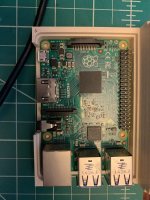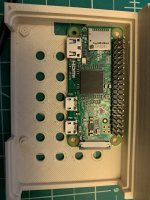Great suggestions! For the 3D-printed case, I think there might end up being several variants:
- Internal hard drive bay mount
- External with one DB25
- External with two DB25
And then, there's the question of which Raspberry Pi. If you're going to use a Raspberry Pi 4 instead of a Zero W, that would be a different case, right? And what if you want to use a Zero W with a USB Ethernet Adapter (for eventual Ethernet support)? There seem to be a ton of possibilities.
Work and family have kept me super tied up for the last couple of weeks, so I haven't been able to build my RasSCSI yet. I hope to very, very soon. I'll probably get started on the case before I even get it working with my Mac. :lol:



